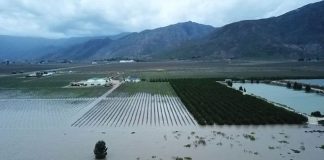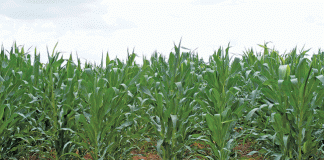Most notably, wheat products declined by 7,24%; maize by 8,16%; sunflower by 3,96%; dairy by 0,43%; rice by 18,74%; and unprocessed meat by 0,47%.
“We need to find the balance between national household food security and the security of primary agricultural production. At the moment, if the one benefits, the other has problems,” said Prof André Jooste, senior manager of research at the NAMC Market and Economic Research Centre.
The NAMC’s August Food Price Monitor shows that the cost of a basic food basket decreased by about R1,76 (0,5%) in nominal terms. Expressed as a share of the average monthly income of the poorest 30% of the population, the cost of the food basket decreased slightly from 33% in July 2009 to 32,8% in July 2010.
For the wealthiest 30% of the population, the share of average monthly income remained constant at 2,6%. August Consumer Price Index (CPI) figures showed that food and non-alcoholic beverages inflation for July 2010 was 1,4%. Headline CPI – the overall inflation mark – showed a slower rate of increase, decreasing 0,5% to 3,7% from June 2010 to July 2010.
“From January to June the increase of food and non-alcoholic beverages inflation was lower each month, year-on-year. For the first time this year, the increase is higher than the previous months, having risen from 0,7% in June 2010 to 1,4% in July,” said Prof Jooste.
The 1,4% increase was largely driven by increases in vegetables (9,1,%), sugar (4,9%), fish (3,8%), other food (2,3%) and fruit (2,2%). Oils and fats, and bread and cereal prices decreased from July 2009 to July 2010 by 4,2% and 3,4%, respectively.
The slower CPI indicates a decrease in demand, with resultant slower price increases. “That’s good for consumers. At one point in 2008, food inflation was over 15%. Now it’s at 1,4%,” said Prof Jooste. The NAMC report found that South Africa’s overall and non-alcoholic beverages inflation compared favourably with countries like Australia and the US, and was considerably lower than Botswana and Zambia.
International food prices have made a significant recovery, increasing 12,47% from July 2009 to July 2010, due to higher demand. Dairy prices showed the most significant increase of 57%, oil prices increased 20%, meat prices increased 12%, and the price of sugar and cereals decreased by 6,28% and 3,68% respectively.
“International food prices were 20,5% lower in 2010 compared with July 2008,” said Prof Jooste. “All the pressures on the market in 2008 weren’t there in 2009 and prices stabilised. It has to do with international demand and supply, and the oil price, which has stabilised at US$60/barrel to US$80/barrel (R442 to R590).”












